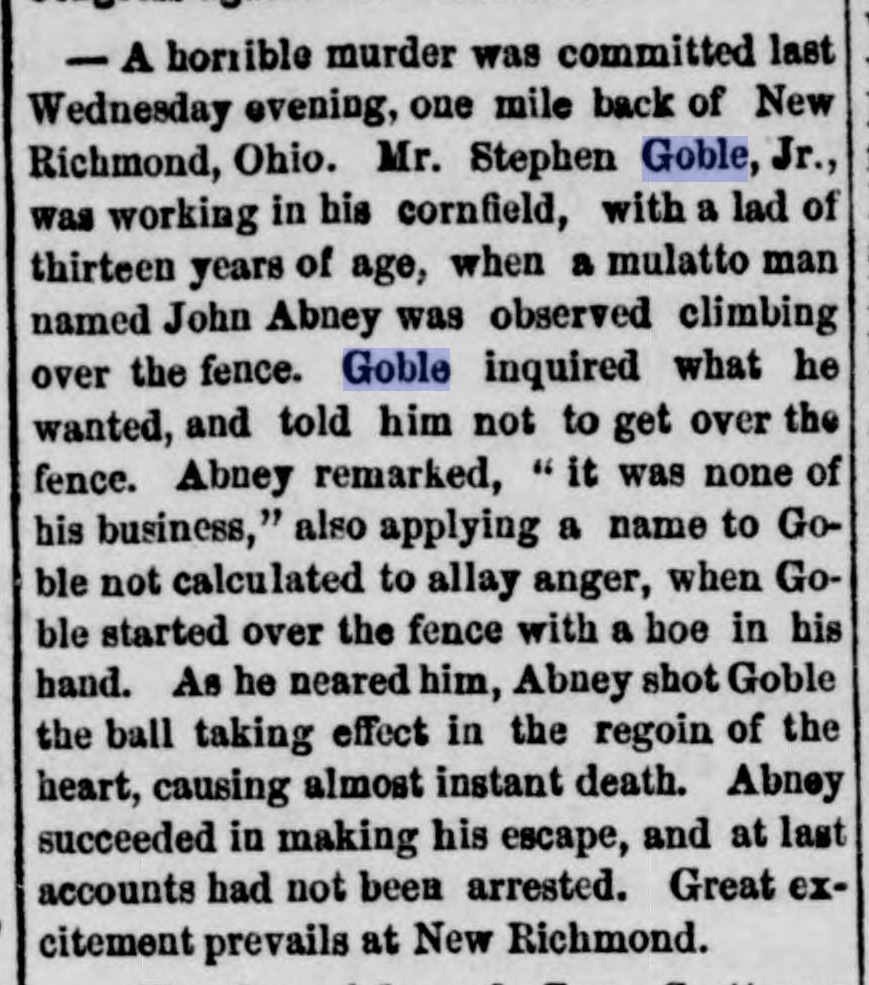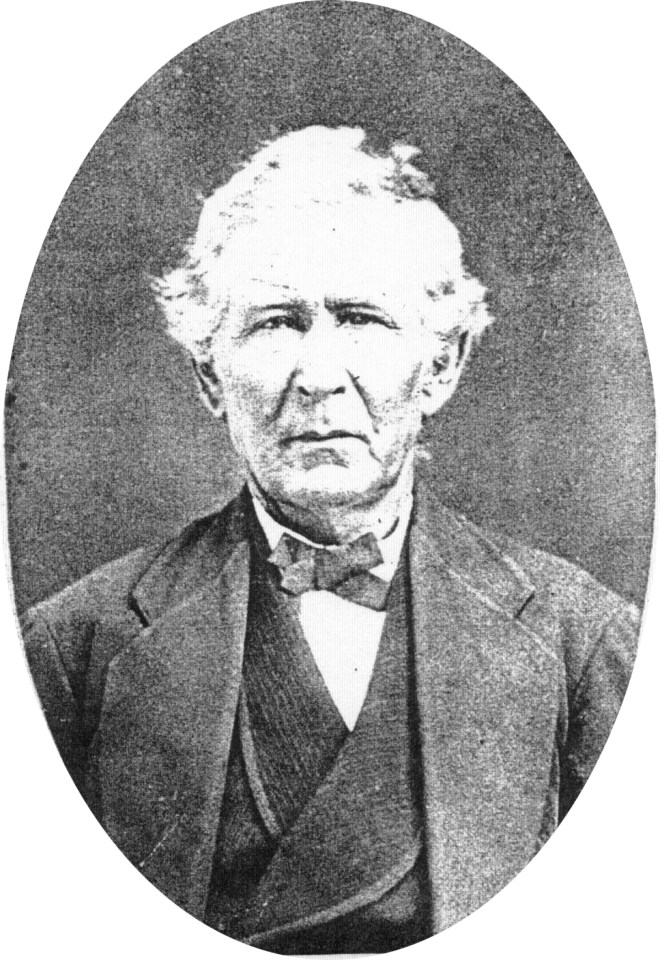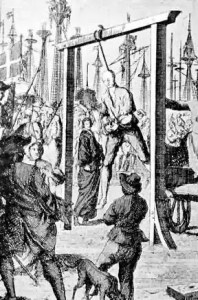
Sarah (Sallie) was born on the 15th of March 1853 in New Richmond, Clermont County, Ohio. The youngest daughter of Alice Brown and Stephen Goble.
The picture of Sallie at left is the earliest photograph I have been able to find that our family owns. She is in her 60s at the time it was taken.
Sallie grew up in a Baptist household of 5 siblings until the youngest child, and only boy, William, died at the age of 8. Then there were only 5 girls left.
Her father work on the river as a steamboat engineer for over 40 years, and also farmed according to the census records. I am not sure how he found time for both!
New Richmond, where she grew up, was a hotbed of abolitionist activity. In the 1830s a man started an abolitionist newspaper in Kentucky, much to the outrage of pro-slavery citizens. Because of the violence perpetrated against himself and his shop by pro-slavery rioters he had to move his operations to a safer location. He looked to New Richmond, which welcomed him with open arms. Many prominent folks in the town were squarely on the side of anti-slavery and suffered outrages from pro-slavery rioters for a while, but the offenders were eventually persuaded to leave. The town itself was composed of a very diverse population, which was made even more so by the fact that it was a major stop on the steamboat trail of folks traveling on the river.
Sallie’s education would have been pretty decent, if she had a mind to learn. New Richmond found education to be an important part of their community, so didn’t stint on putting money into its maintenance. We don’t know to what grade Sallie attended, possibly it was just to the 8th grade. And, of course, if she was done with school, then it was full time household and farm work.
As I mentioned before, while her father worked on the river, he also farmed. I am sure that Sallie spent many a day keeping the chickens alive, the plants weeded, putting the food up for winter, helping to get dinner on the table, doing the laundry, making butter. The usual. Or, they could have been a more prosperous family, who could afford to purchase a few of those household goods already made or hire help in the house. Although there is no evidence of such a thing happening. Census records are a good indicator of ‘help’ in a family and none of the census records found indicate such a person living in the household.
When she was 22 Sallie accepted a marriage proposal from a local lad by the name of John Charles Shaw.1 His family had been settled in the area about as long as hers, so they possibly grew up together. The marriage was performed by Pastor Seigfried on 27 Oct 1875. I do not know where they married, it could have been in the Baptist Church, or in the bride’s parent’s home.
Here is the church today:

The couple made their home around family by staying in Clermont County where they purchased property and farmed, first in Ohio Township, then eventually moving to Monroe Township. They raised a family of three children consisting of 1 daughter and 2 boys. (Tragically, their 3rd son Stephen died at the age of 1). Their youngest son grew up to become my great grandfather Montral Goble Shaw.
Sallie and John were married for 49 years when he died in 1924. By 1928 Sallie was living in Los Angeles County, California. I know this because she sold property in Ohio that she inherited from her husband, and the deed stated her location at the time of the transaction. However, she didn’t lived there a long time. She was probably just visiting with relatives for a long visit when the land was sold.
By the 1930 census, Sallie and her daughter Viola, who never married, were living together in Columbus, Ohio, at the house seen in the picture below. Although, I am sure it didn’t look like that when they lived there in the 1930s.
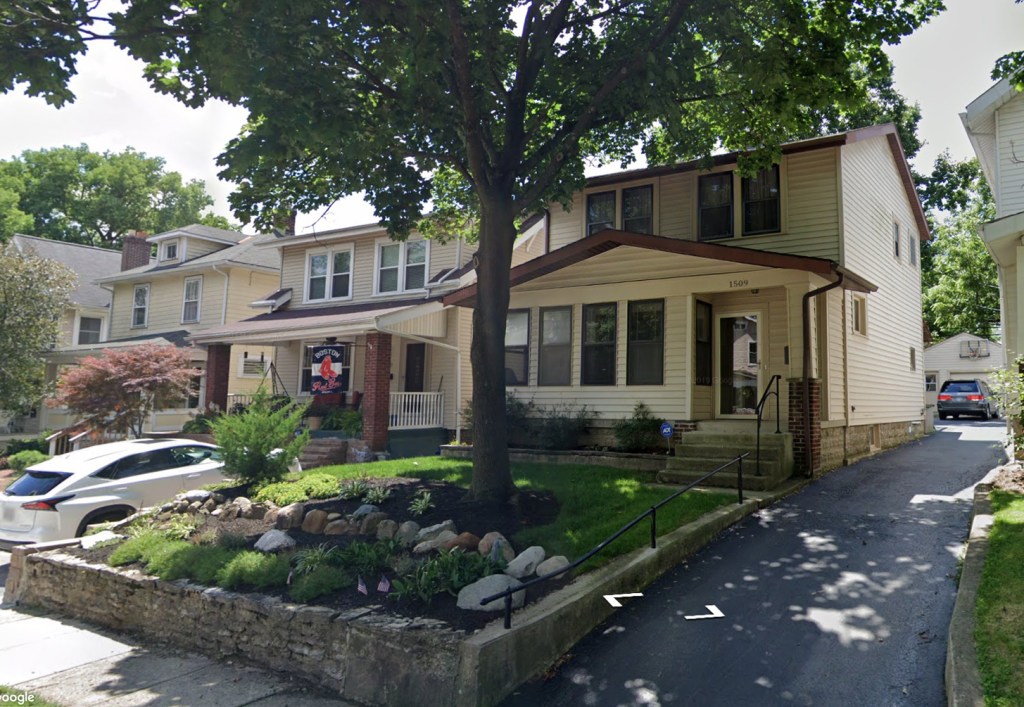
Sadly that is really all I know about Sally. We have a few pictures and no stories, just pieced together official documents that inform us of a tiny bit of her life.
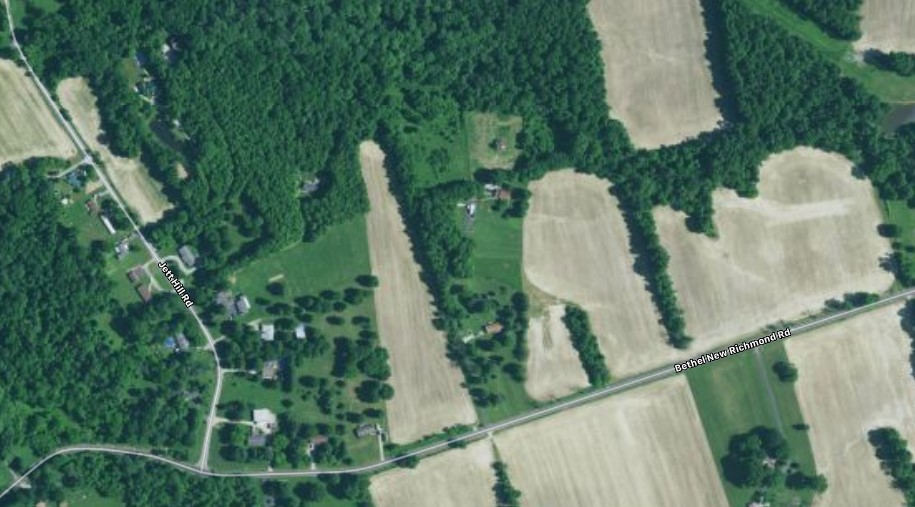
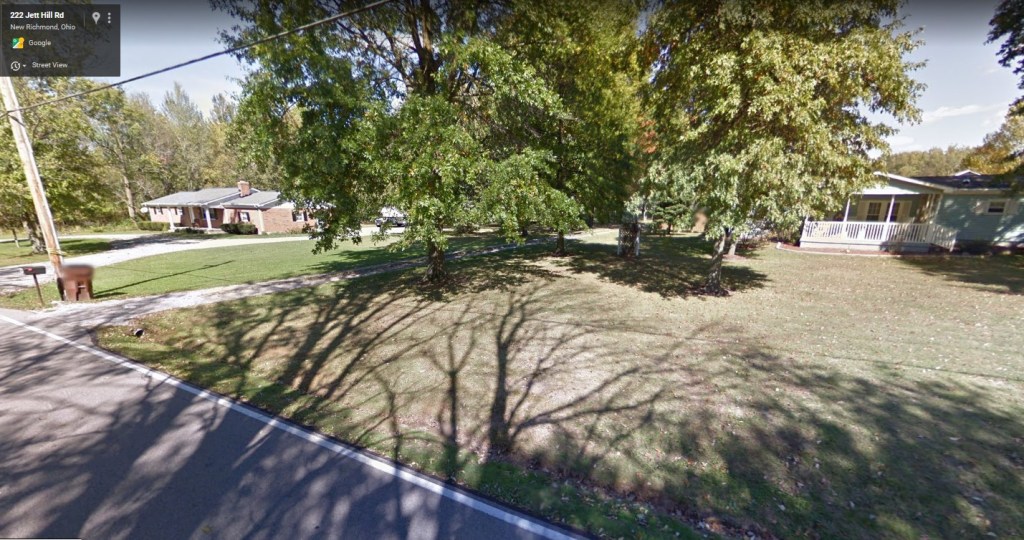
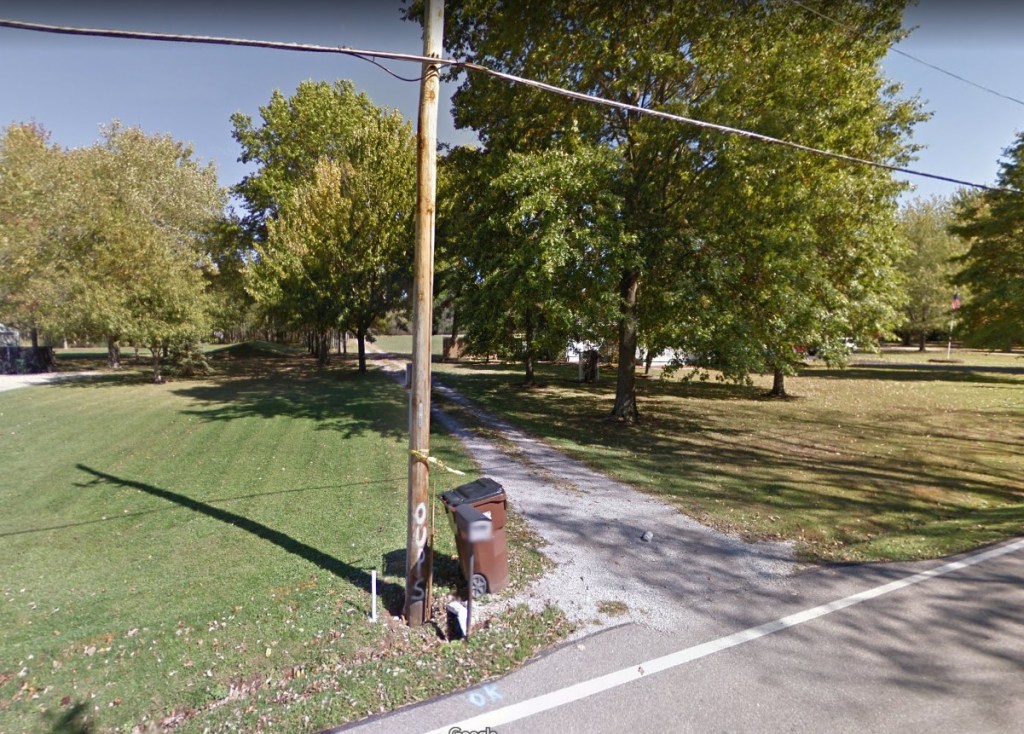
Sources:
1. Copy of Marriage Certificate in possession of researcher, no source as to where it came from. Reads: “This is to certify that John C. Shaw of New Richmond, O and Sallie Goble of the same place were by me united together in Holy Matrimony on the 27th day of October in the year of our lord 1875 in the presence of Ruth Goodwin, Jennie Goss, Simeon Seigfried.” Very ornate border around edge, which means copy that was given to couple and not the registration seen in a register of deeds office.



